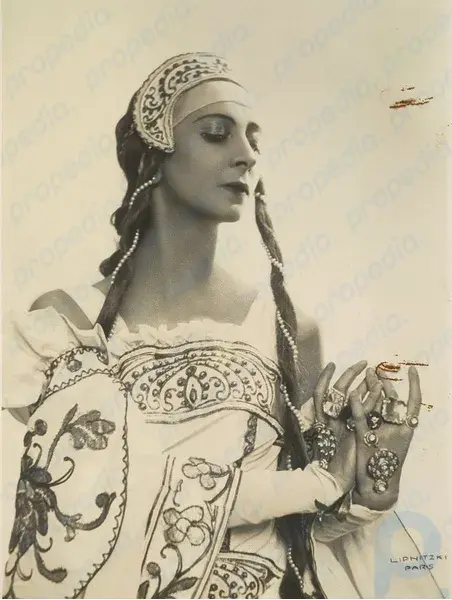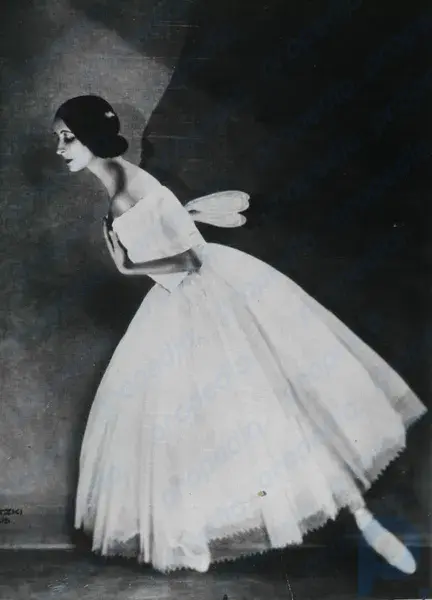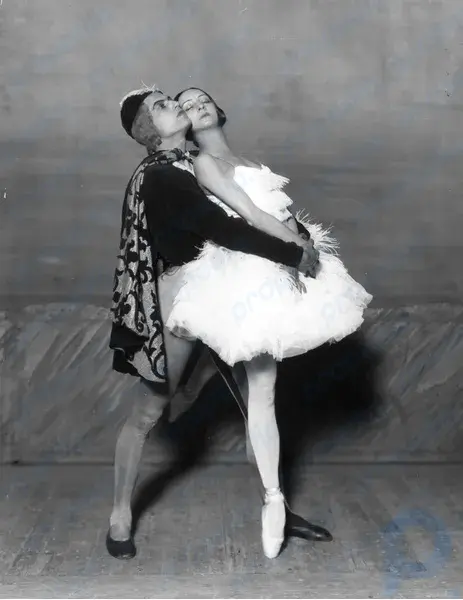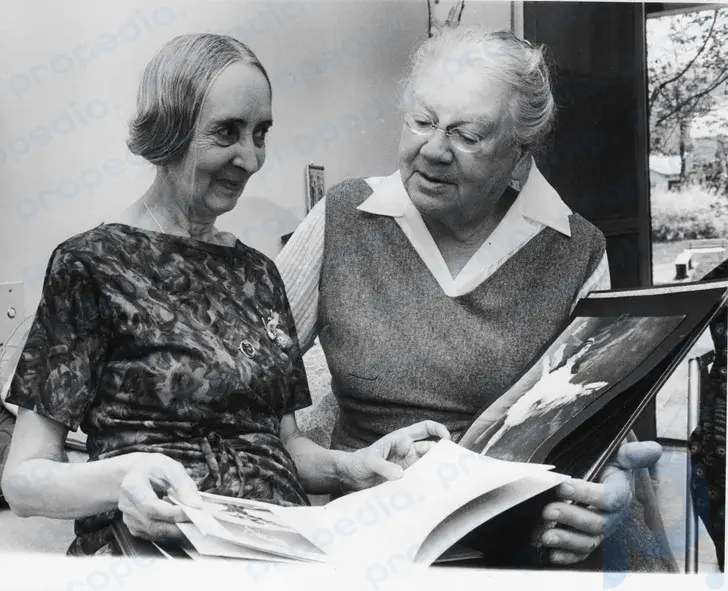Russian prima ballerina who has been compared to the great Anna Pavlova.
Spesivtseva was called a genius, compared to Anna Pavlova, her numerous novels were discussed, she was suspected of espionage and connections with the Bolsheviks and was simply idolized, and then she was locked up in a psychiatric hospital in the United States for two decades.
Olga was born in Rostov-on-Don in July 1895 into the family of a provincial theater actor. When the baby was six years old, her father died of tuberculosis. The girl’s mother, Ustinya Markovna, unable to feed her five children, was forced to send the three older ones to an orphanage at the House of Stage Veterans. Olga was one of them. Later, the chairman of the Russian Theater Society, Maria Savina, helped get Olga into the Imperial Theater School.
Spesivtseva did not miss her chance. She studied in the ballet class of Klavdia Mikhailovna Kulichevskaya and already at her graduation performance she showed herself to be a talented classical ballerina. In 1913, she graduated from college and was immediately accepted into the Mariinsky Theater.
In the first year of service, Olga met the literary and ballet critic Akim Volynsky, who later became her common-law husband. The art critic first saw the girl on stage - and immediately fell in love with her. Akim had a huge influence on Spesivtseva. When ballet dancer and choreographer Mikhail Fokin invited Olga to work with him in America, she refused because Volynsky was a supporter of classical ballet and opposed innovations and reforms.

There is a version that it was Akim who advised Olga to visit psychiatric hospitals in order to carefully study the behavior of patients in order to prepare for the role of Giselle and to portray the scene where she goes crazy as accurately as possible.
“I shouldn’t, I shouldn’t dance it - I’m getting too used to the role,” the ballerina wrote in her diary.
It is obvious that even then Spesivtseva began to experience some mental problems.
But even before getting the role of Giselle, she still managed to go on tour to New York - however, not with Fokin, to whom her lover objected, but with Sergei Diaghilev.
Her partner in Les Sylphides and The Specter of the Rose was the famous Vaslav Nijinsky. The duet was a huge success with the public.
“An apple was born into the world, it was cut in two, one half became Anna Pavlova, the other - Olga Spesivtseva. For me, Spesivtseva is the side of the apple that faces the sun,” Diaghilev often repeated the words of the great dancer and teacher Enrico Cecchetti.
In 1917, when the tour in the States came to an end, Olga Spesivtseva returned to her homeland. But she was leaving a completely different country. Many of the ballerina's colleagues emigrated. By 1919, hunger and devastation reigned in the country.
“The season began, but since many then left for Europe, and I remained faithful to Russia, I, of my own free will and with the consent of the troupe, took over the repertoire of all the great artists. I took one ballet after another - “Giselle”, “Esmeralda”, “Pharaoh’s Daughter” and others,” Spesivtseva shared in an interview.

At that moment, Olga began working under the leadership of Agrippina Vaganova. The conditions were inhumane: the theater stopped heating, but they continued. As a result, the heavy workload led to illness: Spesivtseva contracted tuberculosis.
The affair with Volynsky ended, but a major official, Boris Kaplun, appeared on the horizon, who helped her undergo treatment in Italy and literally saved the dancer. She's back again. Through the efforts of Kaplun, they began to sink the theater, Boris supported Olga in everything. But in 1924, under the pretext of repeated treatment, Spesivtseva nevertheless left the post-revolutionary country and settled in France. The dancer began performing on the stage of the Grand Opera. Especially for her, the classical production of the ballet “Giselle”, which had not been performed in Paris for more than half a century, was revived. While working in Paris, she toured constantly.
When Serge Lifar took over as chief choreographer, Olga began performing roles in his ballets “The Works of Prometheus” and “Bacchus and Ariadne.” It was rumored that Spesivtseva was in love with Serge, but he did not reciprocate her feelings: Lifar was interested in Sergei Diaghilev, not the ballerina. She even seemed to try to commit suicide. Eventually Olga left Paris and went to London.

Olga Leonard's new agent (and admirer), George Brown, organized tours for her all over the world, but Spesivtseva worked tirelessly. She danced so much that she could forget the part right on stage.
In Sydney, Australia, it became clear that Olga needed to be treated. She began to have serious mental problems. Brown took her to France. In her delirium, she kept calling for her mother, but Ustinya Markovna was not there: she returned to Russia.
Nevertheless, the ballerina felt better, she even got married. But no, not for Brown, but for the dancer and teacher Boris Knyazev. However, their marriage did not last long: Spesivtseva literally tormented Knyazev.
In 1939, Leonard persuaded Olga to move with him to the United States - and she agreed. But in America her agent suddenly died. This was the last straw. The ballerina lost her memory and could not even remember her name. The famous dancer was placed in a psychiatric hospital for the poor. The ballet star became patient No. 360446.
American dancer Dale Fern saw Olga in a portrait where she was depicted as Giselle. He was so amazed by the beauty of the girl that he decided to find her. Dale discovered Olga in that same psychiatric hospital. He began writing letters to her and visiting her every week. When everyone found out who Spesivtseva was, the attitude towards her changed, which, of course, benefited the ballerina. After 20 (!) years in a hospital, she ended up on a farm for emigrants, which was organized by Leo Tolstoy’s daughter Alexandra.
“Dear Zinusha, yesterday I was transferred here from the clinic. The farm is large, built with donations. There is a lovely church here and I can pray and be close to God. Of course, it’s difficult to return to life after twenty years in the hospital, my hairstyle is outdated, my hair has turned white, I’ve forgotten how to put on beauty, blush, and powder,” Spesivtseva wrote to her sister.

Olga lived there for almost thirty years. One day Galina Ulanova, Anton Dolin and Maris Liepa visited her.
“A small room with almost Spartan furnishings: a couch, a table, a wardrobe and a washbasin made up all its furnishings. Finally, a very graceful woman with a classic, that is, smooth ballet hairstyle, with wide, excited eyes, came out to us. She said hello, kissed us all in turn, said that she had been terribly worried all morning when she found out that Ulanova and Dolin were coming to visit her... She said that she was not feeling well because Easter was approaching, and Lent had weakened her extremely, and when we presented her with roses, she was moved and cried inconsolably, and we involuntarily felt as if we had committed a tactlessness... We left full of pity and compassion for the fate of the ballerina, famous in her time. It wasn't even a matter of illness, it was a matter of hopelessness and loneliness,
Olga Spesivtseva died in 1991. She was 96 years old. The ballerina was buried in the Russian cemetery in Novo-Diveevo. Six years later, Boris Eifman staged a ballet about Spesivtseva, “Red Giselle,” on the stage of the Alexandrinsky Theater.
Photo: Getty Images, Legion-Media, PhotoXPress.ru, Youtube.com

